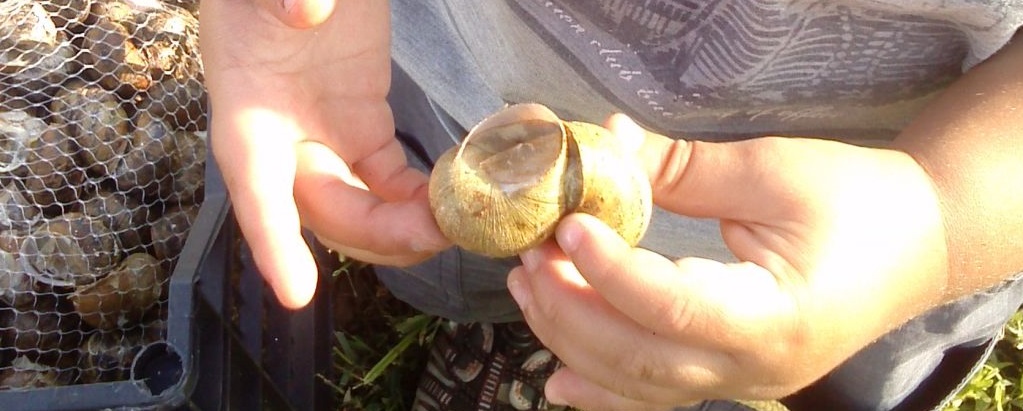
 |
L
|
|

| Home | Curiosity | Products | Gallery | Contacts | Map | B&B da Ilia |
|
L The snail is an invertebrate animal belonging to the phylum of mollusks. Strip on foot and uses the shell as a defense against adverse weather conditions and external dangers. The shell of snails in addition to protecting the same, also reduces the loss of water which occurs through evaporation. The shell is formed with a substance called conchiolin that the animal itself produces. In the language there are bands accretion which become increasingly wide towards the outside and form the typical spiral that rolls always counterclockwise. The body part that creeps on the ground and allows the movements and withdrawn with a strong muscle, is called the foot. Has four tentacles on the head: two antennas that lead the eyes and two tentacles as tactile organs. Between the two tactile tentacles is the mouth that contains a body similar to a tongue (radula) fitted with many microscopic teeth with which the animal grater food before swallowing.
1) shell 2) liver 3) lung 4) anus 5) respiratory pore 6) eye 7) tentacle 8) cerebral ganglion 9) salivary duct 10) port 11) goiter 12) salivary gland 13) genital pore 14) penis 15) vagina 16) gland mucosa 17) oviduct 18) column-bearing 19) 20 foot) stomach 21) kidney 22) mantle 23) heart 24) vas deferens The snail is an animal by nature very cautious and timid as retreats when he hears the first sign of danger. When you just touch the antennas, these retract instantly. It is well known its slowness of movement (0.03 mph, corresponding to 0.048 km / h). It drag the foot and uses a silvery slime as lubricant to avoid injury. The secretions of the snail also serve to form the epifragma when the animal withdraws into its shell. Another curious feature of the spiral is linked to reproduction. It is in fact insufficient or hermaphrodite has both male and female, but the apparatus for the reproduction needs the intervention of one of his similar. So the two individuals during mating and are fertilized at the same time.
SNAIL FARMING The snail farming, branch of animal husbandry, is the breeding of the snail for food. The different enclosures built on the total land dedicated to snail farming, are divided in 2 different categories: fences for breeding and fattening pens of newborns in the ratio of 4 to 6 Each enclosure is separated from the others by a transition zone for the operator, large 1 meter. |
|
|
|
La Chiocciola
|
| ©2014 La Chiocciola - Elicicoltura | Designed by Andrea Ramella Pralungo |